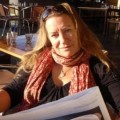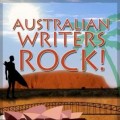 You’ve chosen to self-publish your book, so now you will have to decide which elements you require. Generally,a book will contain some of the components listed, although not always all of them or in this order.
You’ve chosen to self-publish your book, so now you will have to decide which elements you require. Generally,a book will contain some of the components listed, although not always all of them or in this order.
The Cover
Don’t be fooled. We do judge a book by it’s cover! This is one of the most important parts of your self-published book and must be inviting to potential buyers and readers. It should contain the following information:
Front Cover: Should feature:
- title and subtitle (if any)
- name of the author
- edition number, if relevant
- Great concept and design features
The type should be fairly large and readable from a distance and the title should be catchy, memorable and not too long. The bookcover should also look good when it is condensed down to a ‘thumbnail’ size image on your computer.
Back Cover:
- ‘book blurb’ – a brief, enticing synopsis that makes the reader want to read more
- about the author
- a photograph of the author
- about other works by the author
- ISBN and barcode (if applicable)
Inside Front and Back Covers: These are usually blank.
Book Spine
The title and author’s name are printed down the spine.
Front Pages
This section is usually numbered in roman numerals.
Half-title Page (Page i): Book title only. No page number displayed.
Frontispiece (Page ii): Usually blank but can contain a list of other titles by the same author or an illustration that faces the title page (portrait orientation). No page number displayed.
Title Page (Page iii): This contains the book title, subtitle (if any), author and publisher. No page number displayed.
Imprint Page (Page iv): The imprint page should include your copyright notification, date of publication, publishing details, ISBN and CiP Data (if applicable). The names of your editor, book producer and printing company also appear on this page. No page number displayed. Also the history of the edition, book designer/producer and printer’s name, typefaces used, paper and binding, etc.
Dedication: This can go on any of the preliminary pages. No page number displayed.
Epigraph: If you have a simple quote or phrase that is significant to your book, you may want to consider adding it to the front matter of your manuscript as an epigraph. No page number displayed.
List of Illustrations or Tables: If your book includes several key illustrations or tables that provide information or enhance the text in some way, they should be listed. No page number displayed.
Foreword: This contains a statement about the book and is usually written by someone other than the author, who is an expert or is widely known in the field of the book’s topic. A foreword lends authority to your book and may increase its potential for sales and is most commonly found in non-fiction books. No page number displayed.
Contents: This is essential in a non-fiction book that has parts and chapters. A contents page in a fiction book is only used if your work includes specific chapter titles, not just numbers. Roman numeral page numbers are usually displayed from the second contents page.
Preface: Common in non-fiction books, the preface is written by the author and usually describes why the book was written, research methods, qualifications and expertise in the book’s subject matter.
Acknowledgments: This includes the author’s thanks to people who provided support or help during the writing process or writing career. It may also include credits for illustrations or excerpts if not specified elsewhere. This section can also go at the back of the book if preferred.
TOP OF PAGE
Text Section
Introduction: This section in a non-fiction book gives information about the following text your reader should know before proceeding to read the book. Unlike a preface, which usually addresses the qualifications of the author, an introduction refers to the main body of the work itself and may also describe, in more detail than a preface, the research methods and overall concept of the book. It normally appears after the contents and before the first chapter of the book. The introduction should start on a right-hand page, and arabic page numbers start here (Page 1).
Chapters and Parts: Most non-fiction books are divided into chapters, with titles similar in style and length, and equally placed throughout the manuscript. When text can be logically divided into sections larger than chapters, the chapters may be grouped in parts. Each part is normally numbered and often given a title. Chapter numbers continue in sequence throughout the publication.
Epilogue: Additional text at the end of the book, serving as a brief comment or conclusion to the preceding text – often continuing the story years later. Chapter numbers are not used for an epilogue.
Afterword: This is also a brief concluding section often used in non-fiction works, and does not have a chapter number. An afterword is usually written by someone other than the author.
Conclusion: This provides a summary of your ideas, concepts and advice. A conclusion would replace an epilogue or afterword.
About the Author: You may add a short biography (blurb) at the end of your main text that lists any expertise you have in the field in which you are writing, any previous books that you have published, and a brief summary of where you currently live, your family, and what type of work you do. This can also be placed in the front part of the book or on the back cover.
After ‘The End’ of the book
Appendices: These includes any data that might help clarify the information in the book for the reader but would have disrupted the flow of the main text had it been included earlier. Some items included in the appendices might be a list of references, tables, reports, background research and sources, if not extensive enough to be included in a separate section.
Glossary: A glossary comprises alphabetically-arranged words used in the book and their definitions.
Resources: Readers may want to buy products or learn more about the field in which you’ve written. A list of organisations, distributors, websites and other sources can be invaluable to your readers.
Bibliography or References: Both the bibliography and reference sections list the sources for works used in a book. The sources are arranged alphabetically by the author’s last name.
Index: The index is an alphabetically-ordered list of words and terms used for referencing the content in a non-fiction book.
Colophon: Originally, the term ‘colophon’ referred to information about the publisher and printing, data now found on the imprint page. However, it can also appear on the last right-hand page of the book containing, e.g. the history of the edition, book designer/producer and printer’s name, typefaces used, paper and binding, etc.
For info on our Publishing Packages, click here.





